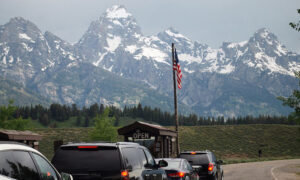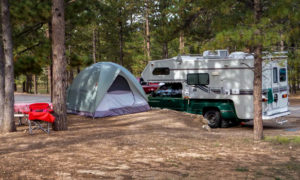
Tires are the most important safety component on cars. They are the vehicle’s only contact with the road, and even the most powerful engine, strongest brakes and steadfast seatbelts, leave drivers vulnerable to the grip of tires on the road. So, it is important to be well informed before you buy.
With a wide variety of brands, features, benefits and sizes available, it’s hard to know which tires is the best fit for weather and road conditions. Also in a difficult economic environment, RVers want to know how to get the best value for their tire dollars.
- Tread is very important. Make sure you replace tires when they wear down to 2/32-inch of tread. A simple way to test this is to use a penny. Place the penny in the shallowest tread groove with Lincoln’s head pointing down. If you are able to see the top of his head, your tire needs replacement.
- Know your vehicle. The tire size, speed and rating affect the driving experience in areas such as comfort, handling or traction in rain or snow.
- Know the design and size of your current tire. Tire size information is located on a sticker on the driver’s doorframe and is visible when the car door is open. Other relevant information is located on the tire’s sidewall. Also, look for the performance rating which is usually a number accompanied by the letters “U”, “T”, or “H”. Replacement tires should have the same or higher performance rating as the one listed on the sidewall.
- Have an experienced tire technician perform the installation. Special machines and solid training are required to do this job properly
- Buy an equal number of tires—either two or four—since tires tend to wear out around the same time. Balanced tires ensure greater stability and driving control. If you have a four-wheel drive or all-wheel vehicle, manufacturers usually recommend replacing all four tires at the same time.
- Maintain your tires by checking air pressure once a month and rotating them every 5,000 miles.
- Always ask for a free written warranty.
About Les Schwab Tire Centers
Les Schwab Tire Centers is a leading independent tire dealer with more than 420 locations throughout Oregon, Washington, Idaho, Montana, California, Nevada, and Utah.







As mentioned, if you have 4WD it is best to replace all 4 tires at the same time. However, if you have AWD you MUST replace all 4 tires at the same time or the mismatched tires will most likely cause expensive damage to the transfer case.
Mismatched tires will sometimes also cause the check ABS light to come on, the check AWD light to come on, or the check 4WD light to come on.
When I owned my auto repair shop I fixed many of these types of problems by having matched tires installed.
Also do not mix manufacturers or model of tire. All 4 tires should be the same model and from the same manufacturer.
Again, public safety organizations and tire manufacturer associations emphasize that TIRE AGE is a MAJOR factor in RV tire failure. I don’t understand why you want to ignore this information, available all over the net, and endanger RV owners with less than complete information. Notice that the Les Schwab press release deals with AUTOMOBILE tires–no reference to “LT” tires, for example–and NOT RV tires.